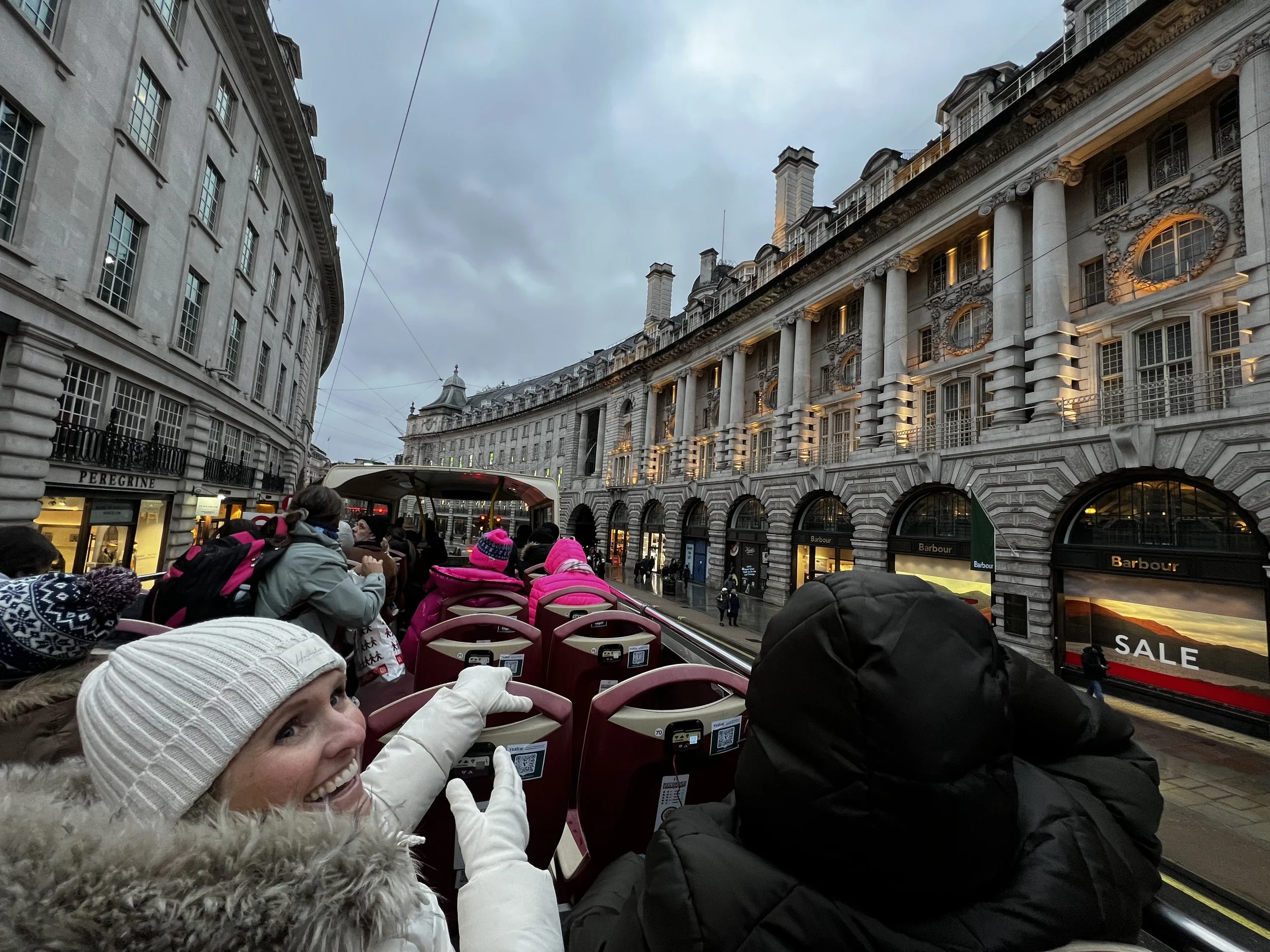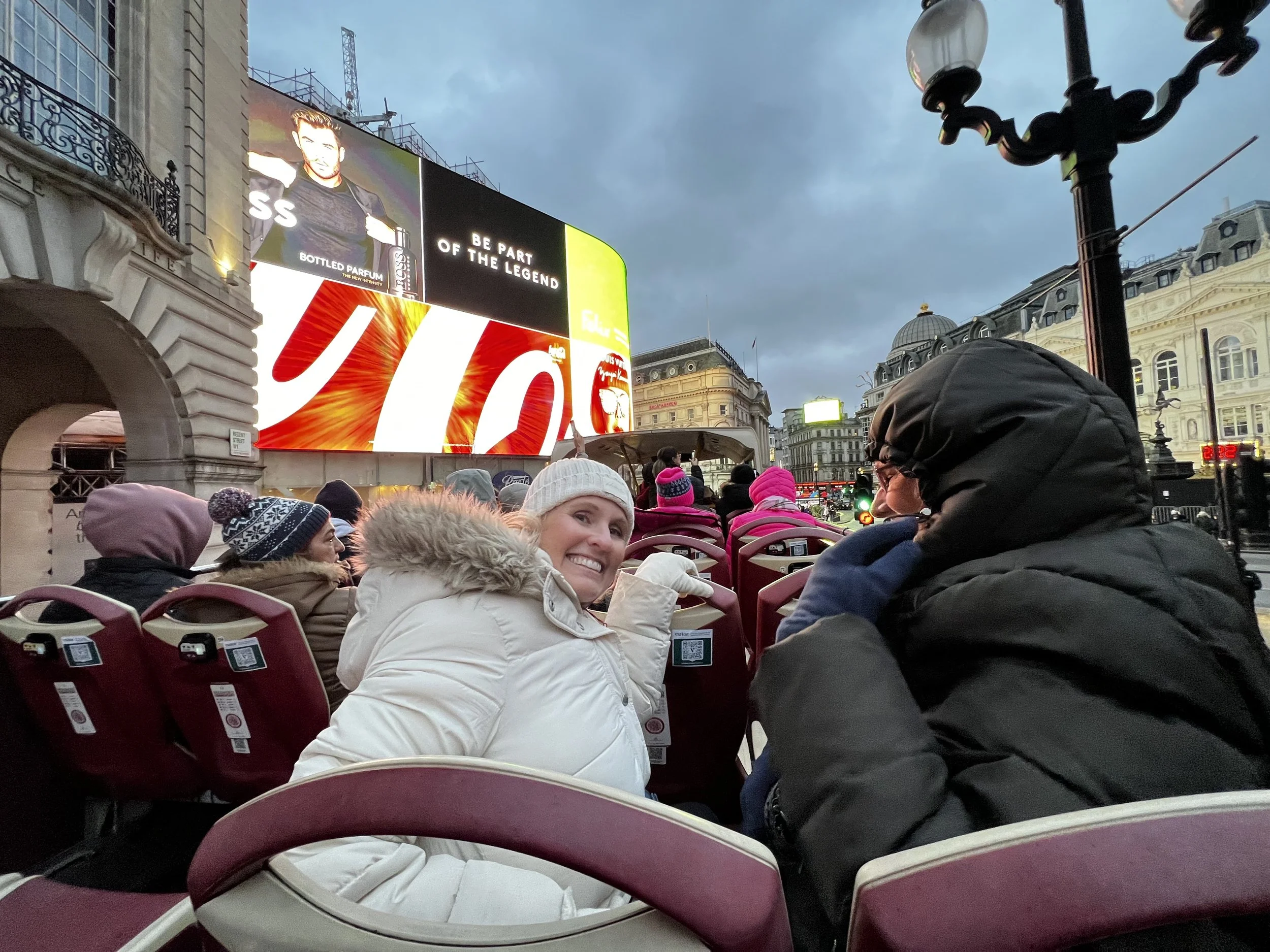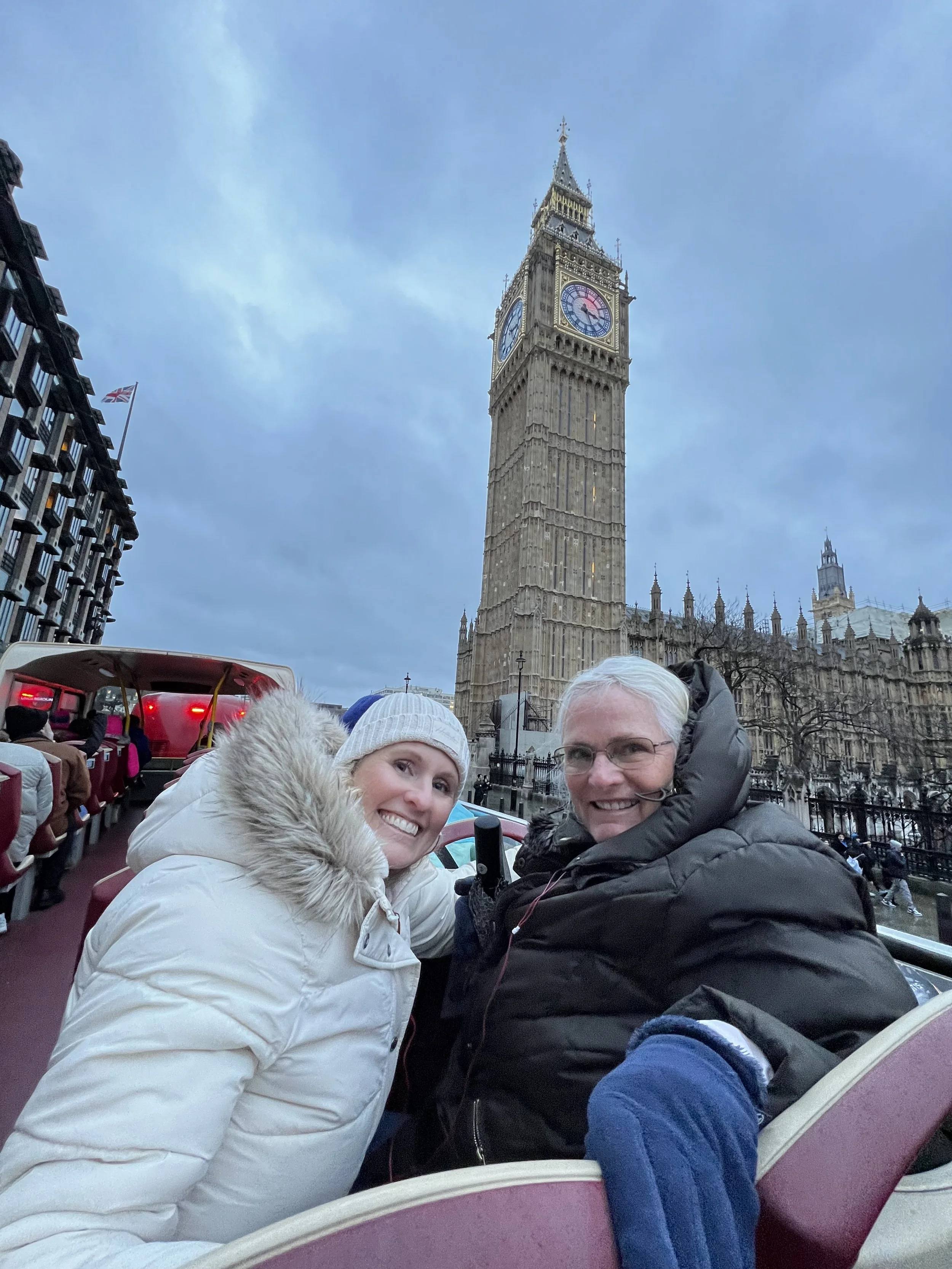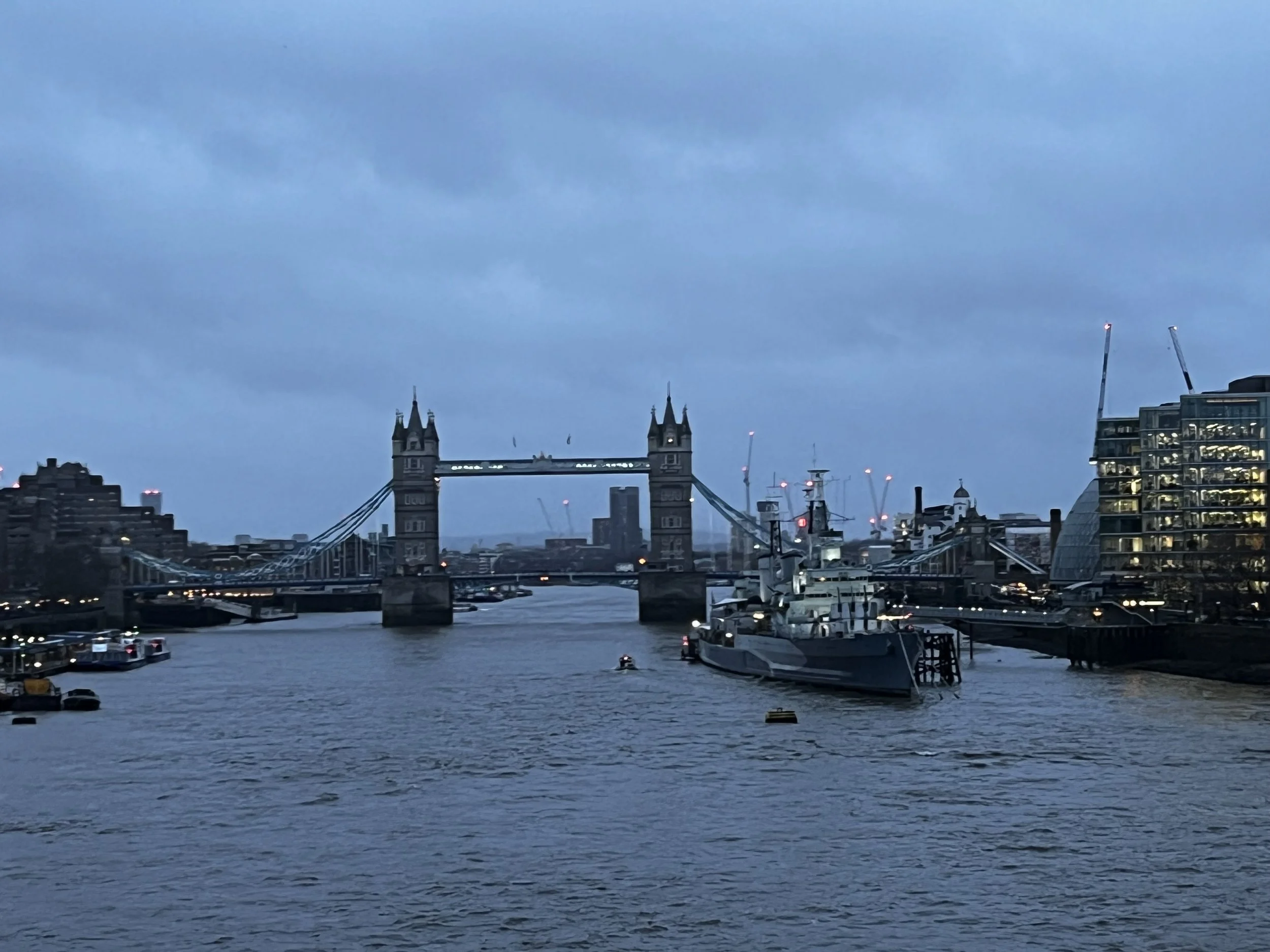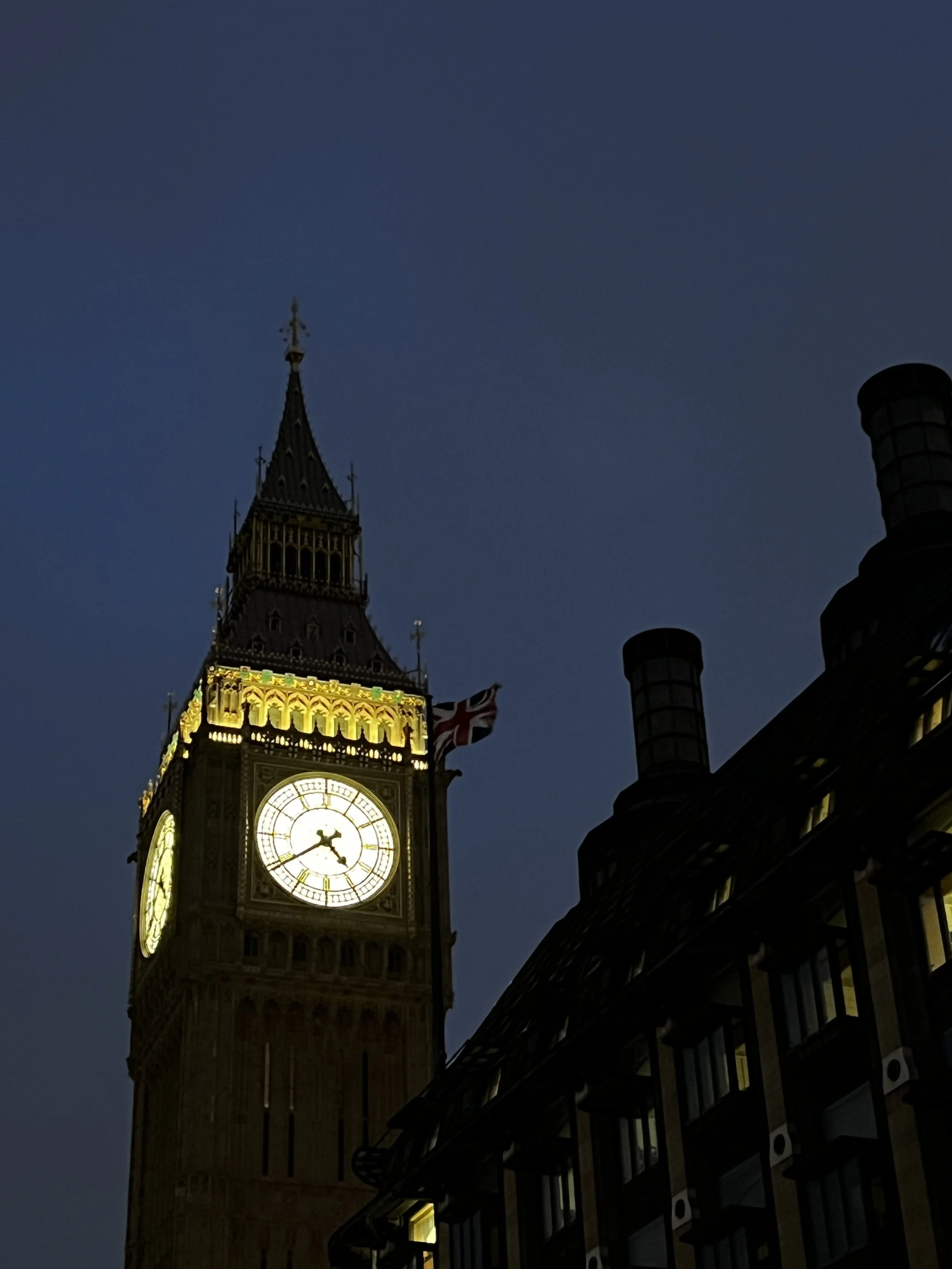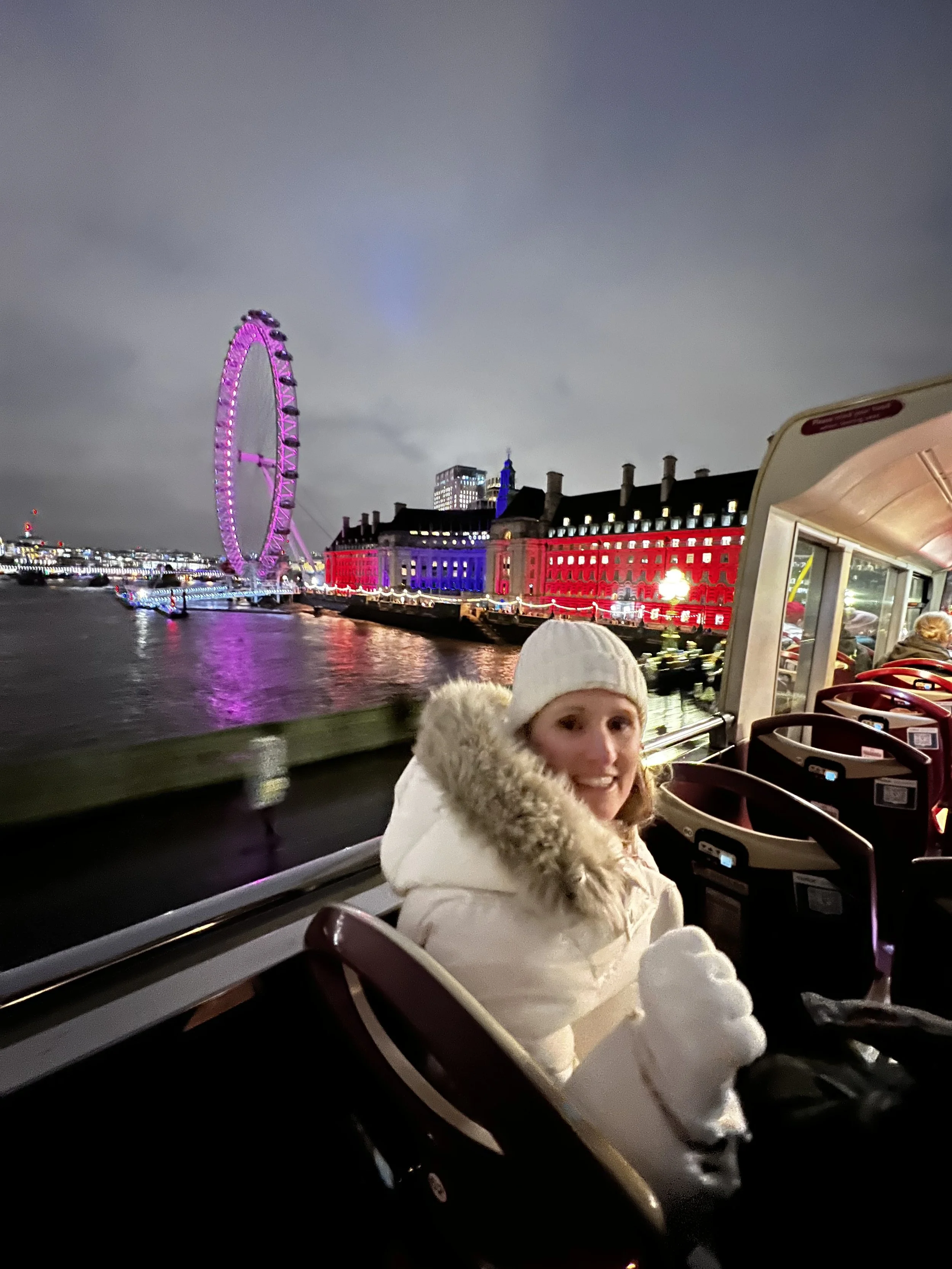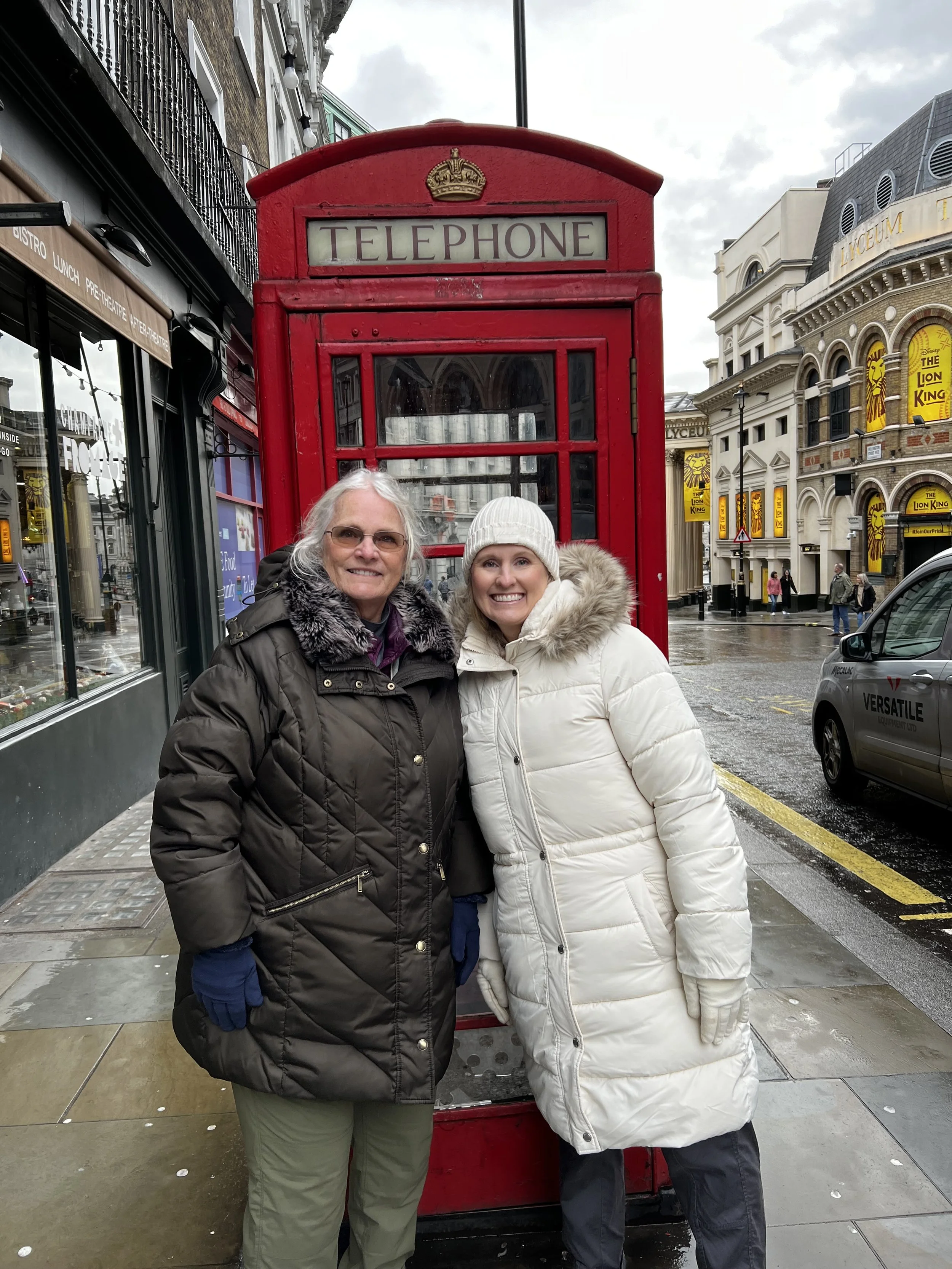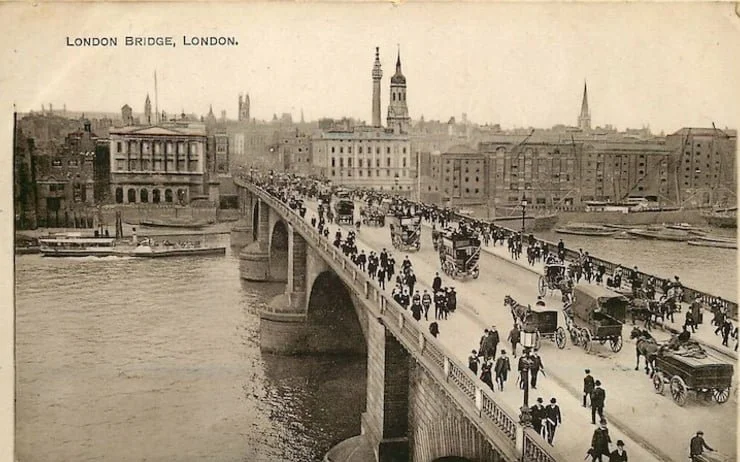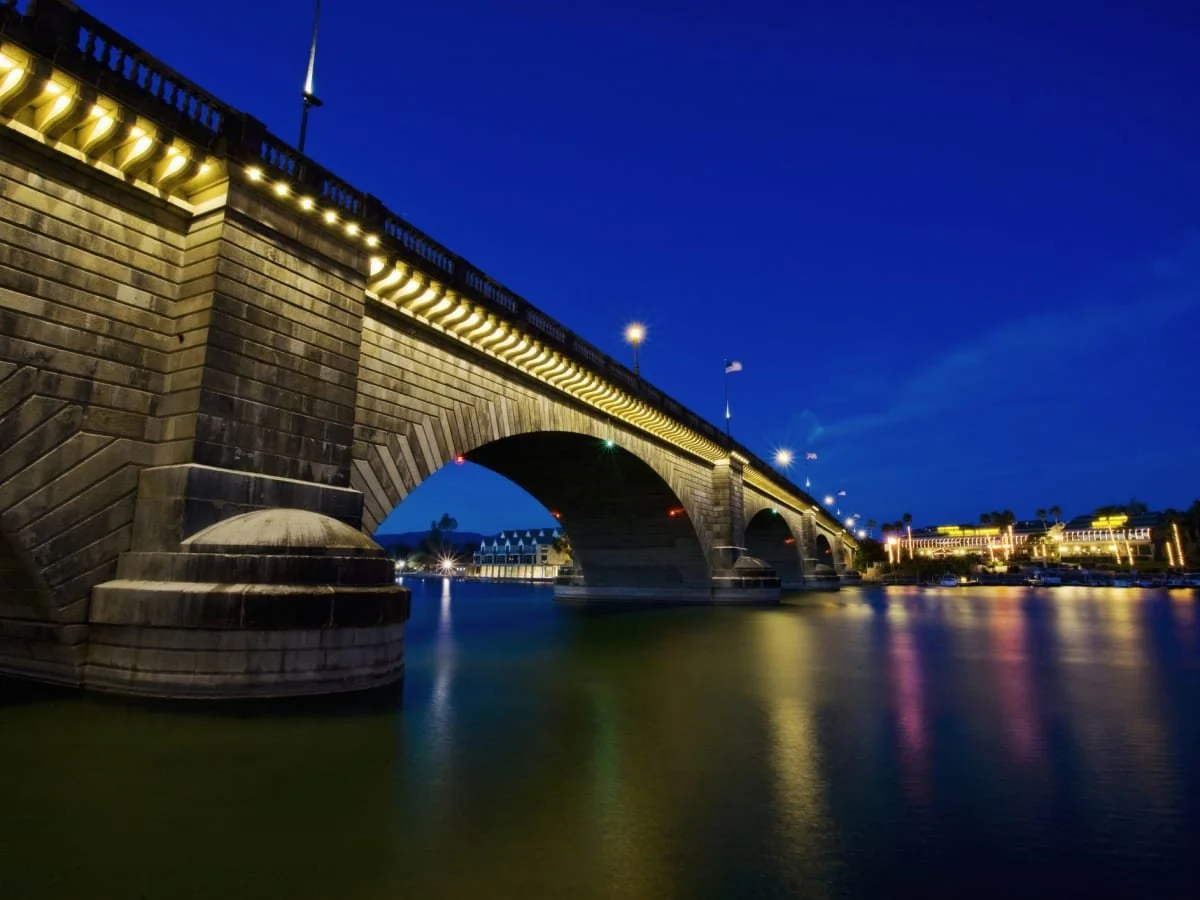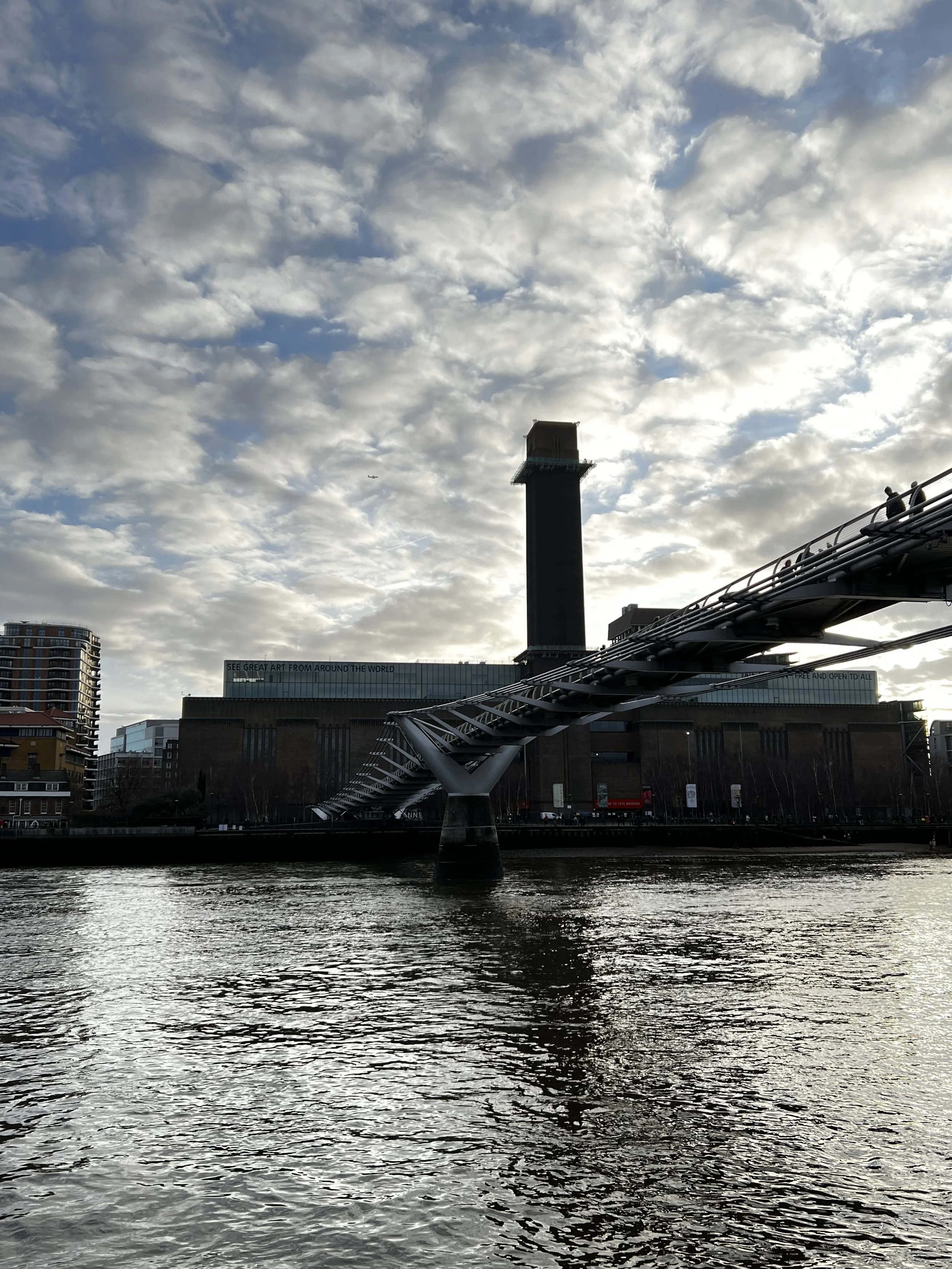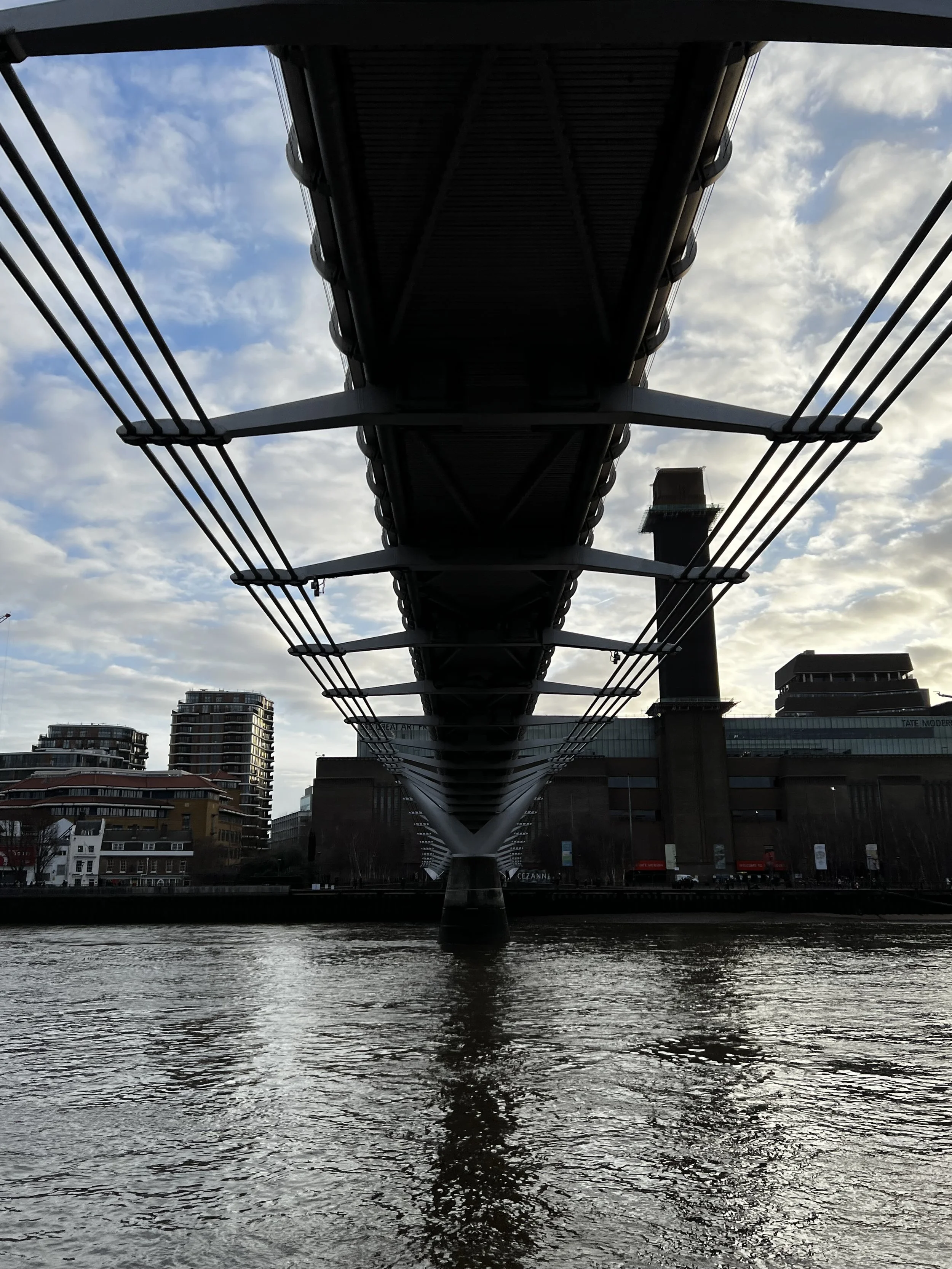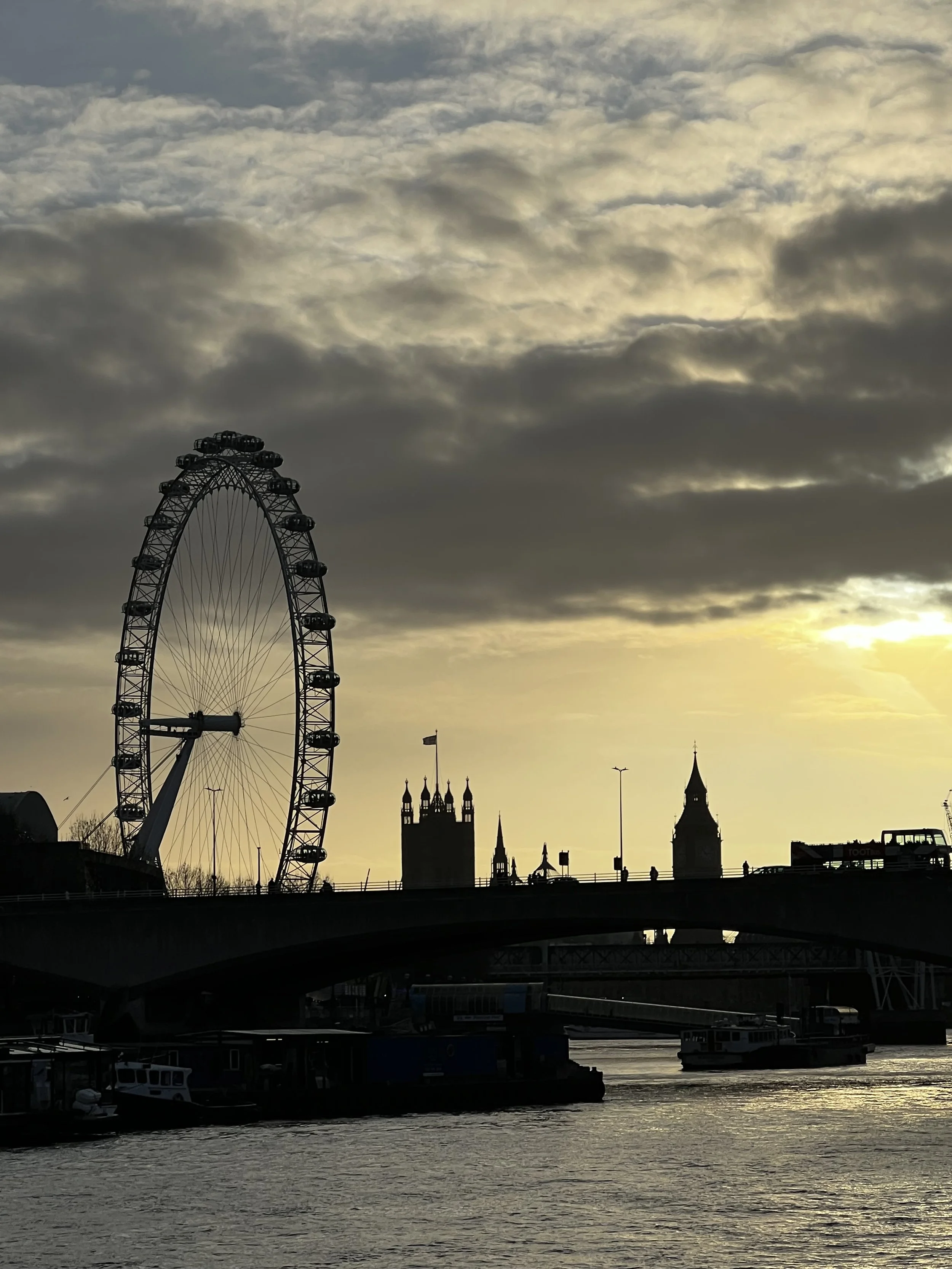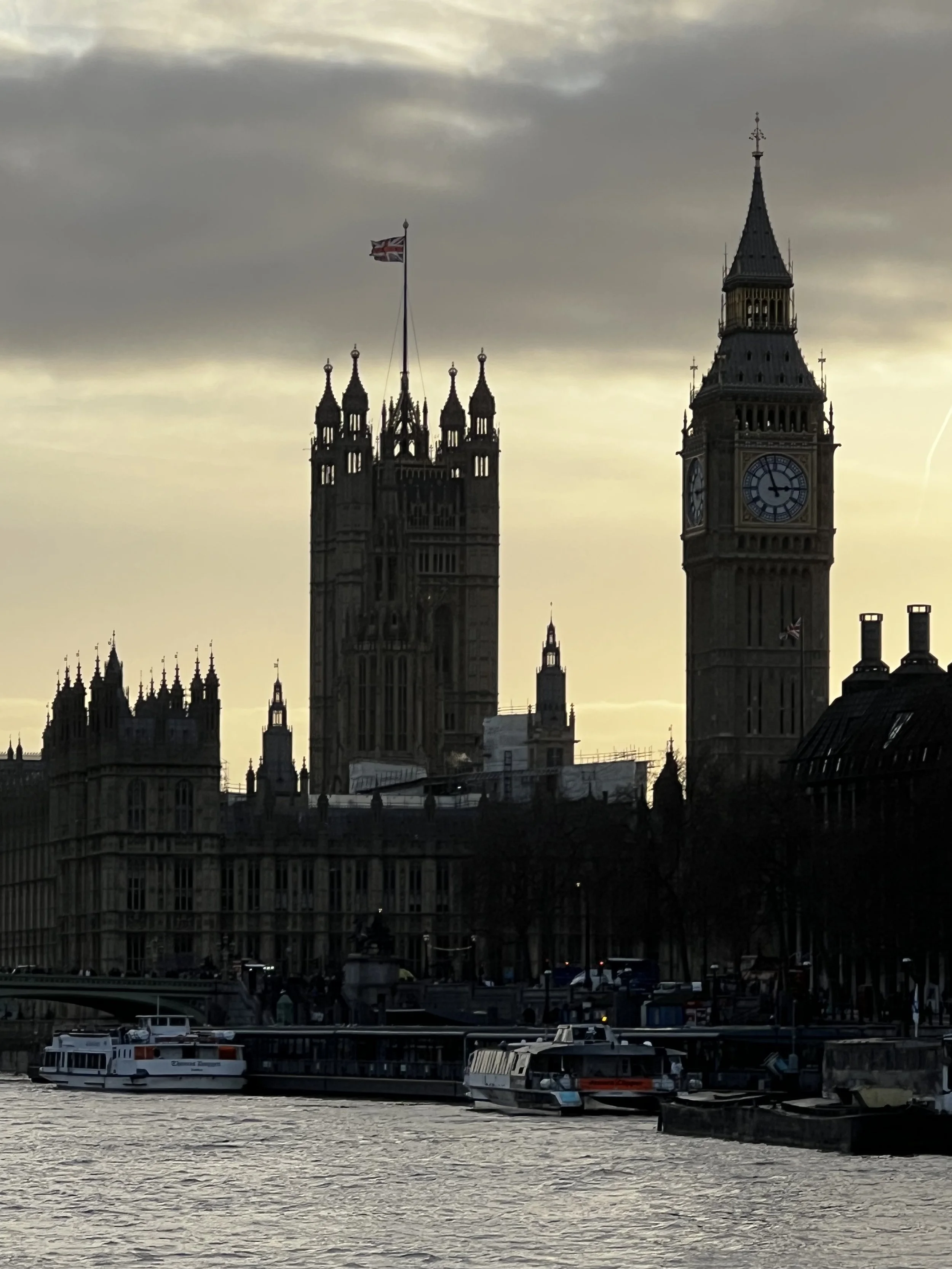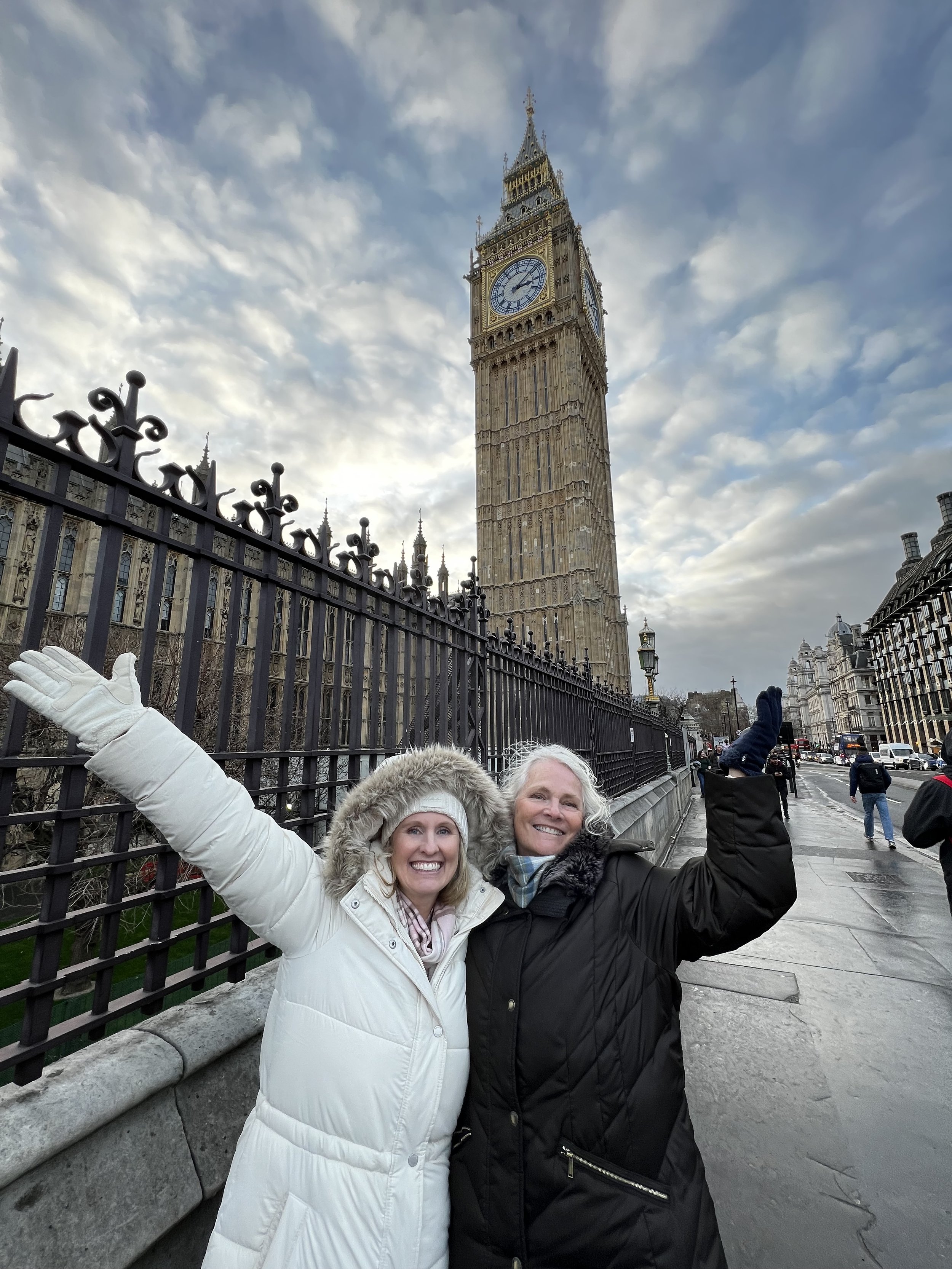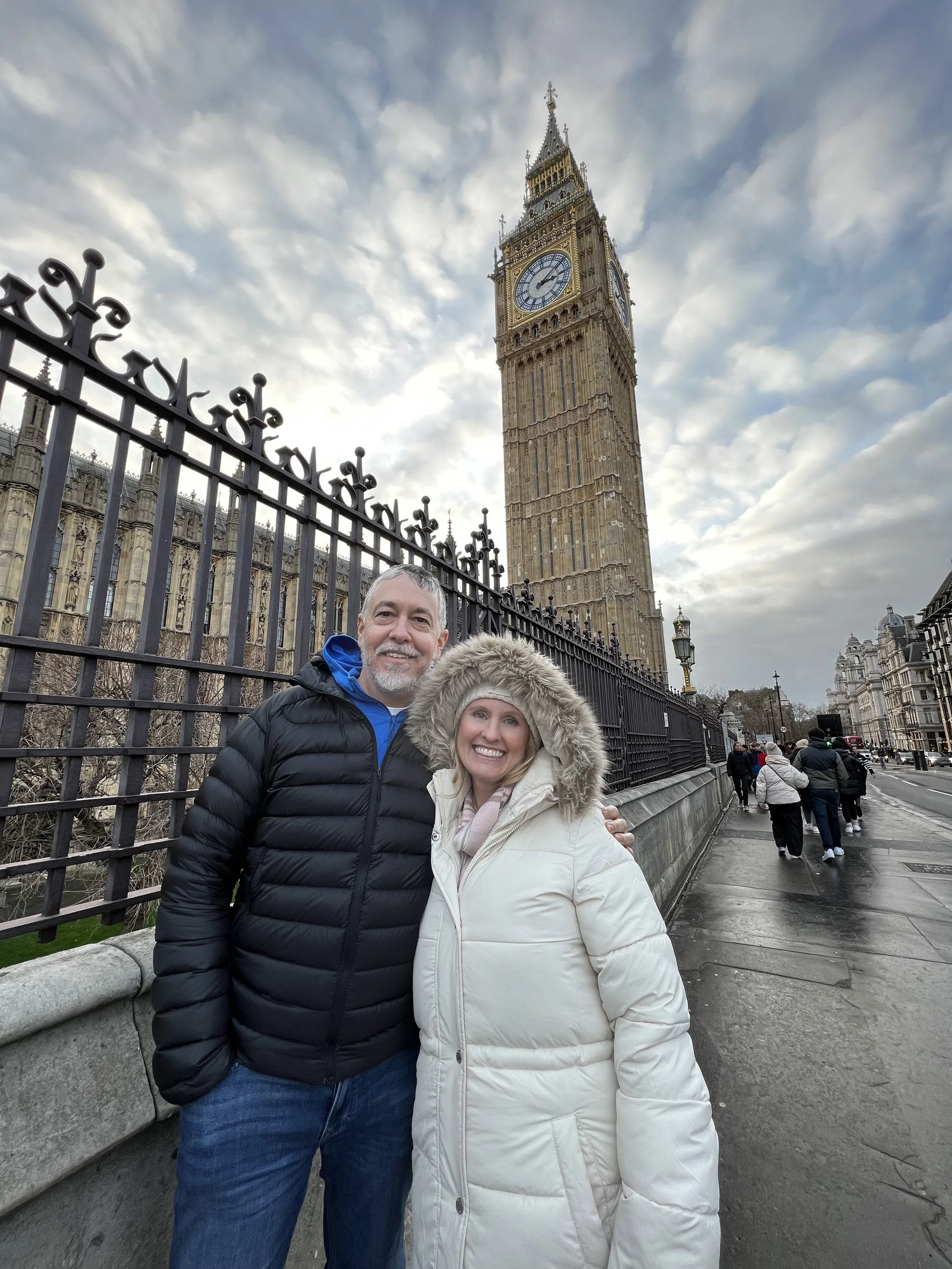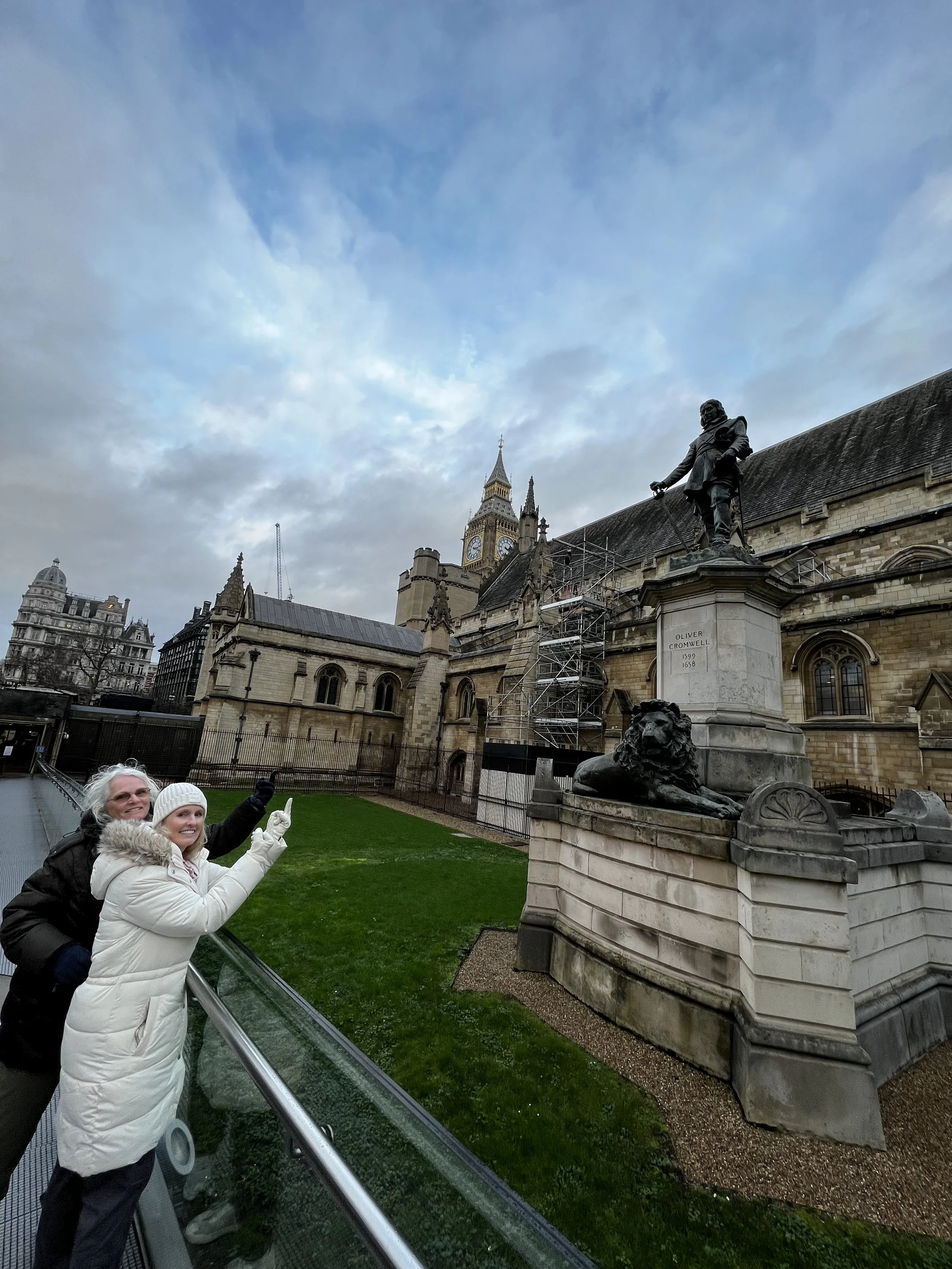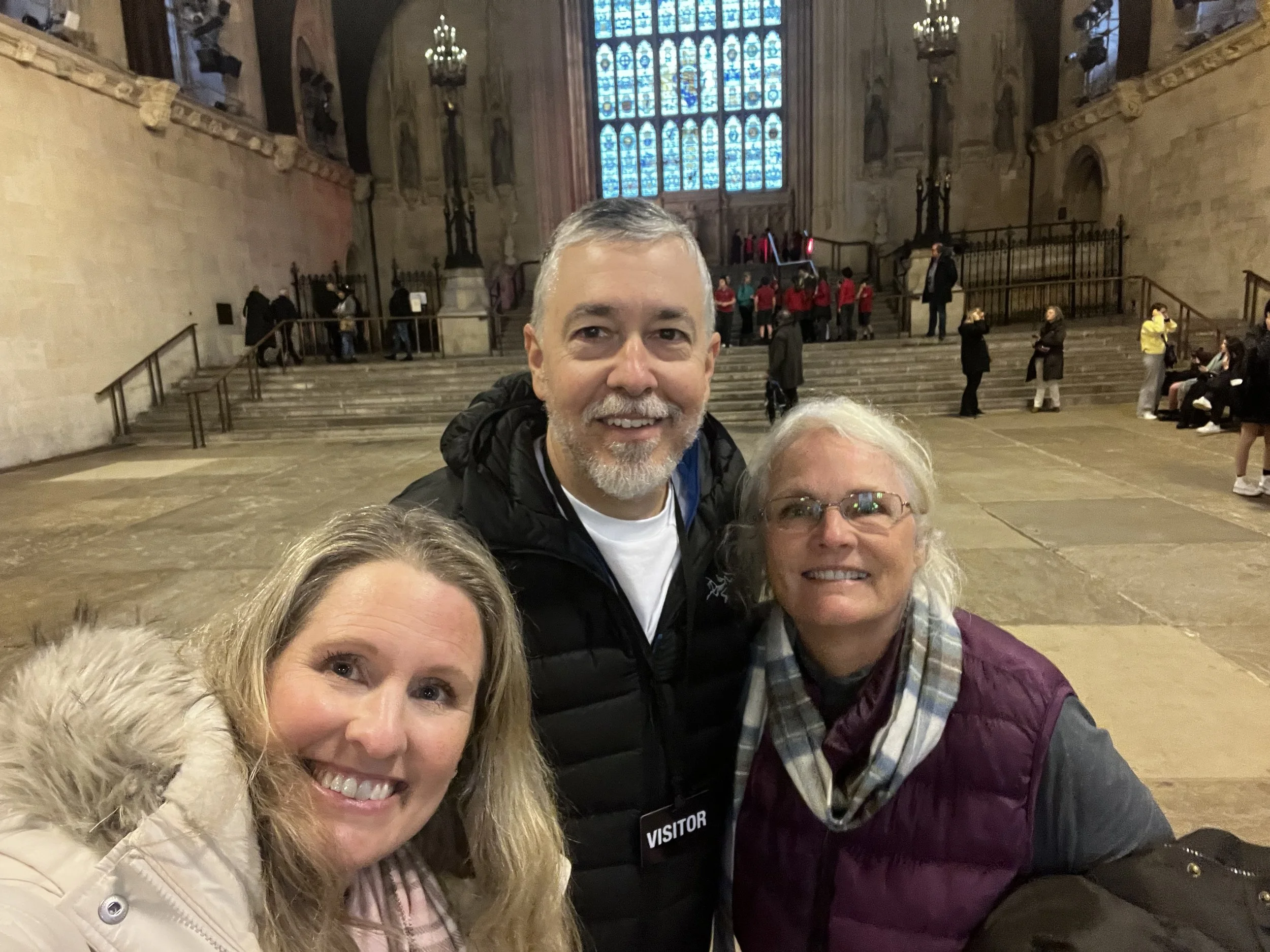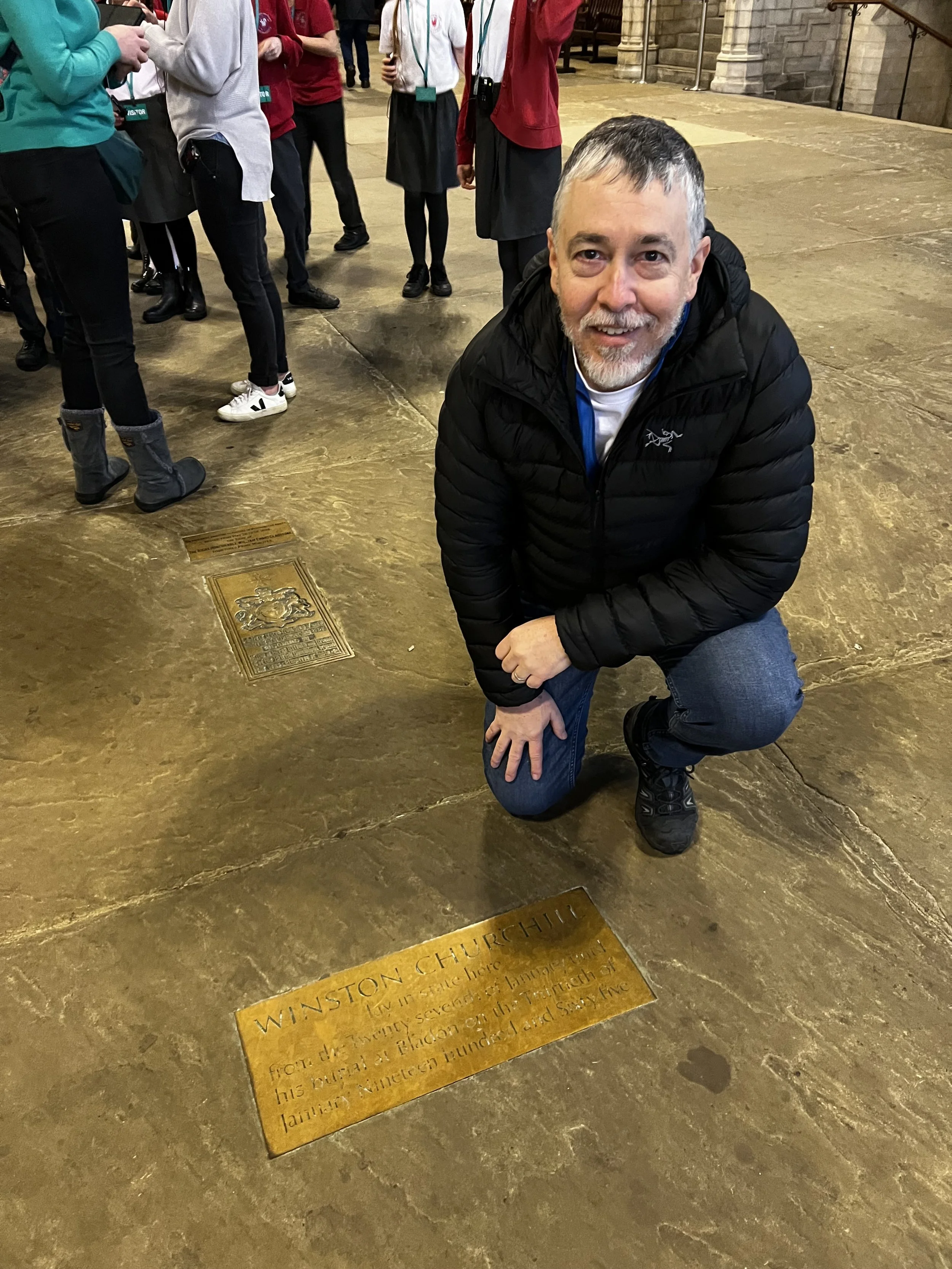Palace of Westminster
“When a man is tired of London, he is tired of life; for there is in London all that life can afford.”
Tuesday & Wednesday
With a bit of a late start, our first full day in London (Jan 3) began with lunch. Always on the hunt for amazing new places to eat, Keith clearly applauded our choice of Italian.
We had an amazing lunch at ASK Italian. It was a chain, but the food seemed really authentic and was absolutely delicious.
You may recall I had serious misgivings about paying good money for The Scotch Whisky Experience in Edinburgh, but in the end I really enjoyed our time there.
So too with the hop-on-hop-off buses in London. They may be wildly cliché but we spent the day riding the buses and it turned out they were an amazing way to see such a big city within a brief timeframe. (Yes Amanda! You were right in both instances! 🙄)
Despite the fact that it looks cold, we really had an enjoyable time (well…they did…I was horribly underdressed and cold, but Amanda and Pam had dressed appropriately and were quite comfortable).
Regent Street
Piccadilly Circus
Westminster Abbey (right) & Houses of Parliament (left)
The Elizabeth Tower with Big Ben inside.
London Eye
St Paul’s Cathedral. We noticed people walking around on the upper balcony, which was closed during our last visit. We’ll have to go back and hope we can make it up to the balcony this time.
Rain coat? Yes. Warm coat? Warm hat? No and no! I pulled my hood down for this picture; it was all I had to keep me warm. 🥶
The Shard. Amanda and Pam have been to the top, so I’ll need to do that on this trip.
Tower Bridge
Elizabeth Tower illuminated and a Union Jack.
Westminster Abbey
London Eye illuminated
Amanda: “Hey mom, I think we better get Steve home and warmed up.”
Wednesday
Today (Jan 4) was the last full day for the Three Musketeers to explore together. It’s hard to believe that Pam has been here for 19 days and is heading home tomorrow!
To celebrate the wonderful experience we all had, Amanda and I booked a reservation at Côte Brasserie in Covent Garden for us to enjoy lunch together. For apéritifs, Pam had a French 75 (Blanc de Blancs Brut, gin, sugar, & lemon juice) and Amanda and I had a Fleur Spritz (St-Germain elderflower liqueur, Blanc de Blancs, & soda)—delicious!
Pam enjoyed a wonderful fillet. It was a great chance to look back on our time together and be grateful we were able to enjoy so many memorable experiences!
Then it was time to hop-on the bus again. We rode to the Tower of London, where we hopped on a boat that cruised down the Thames toward Westminster (the boat ride was included with the bus tour).
Tower Bridge from the boat’s upper deck while still docked at the Tower Millennium Pier.
London City Hall (left), familiar from the opening scenes of Harry Potter and the Half Blood Prince.
The Shard
Passing under the current London Bridge. The Roman founders of London built wooden bridges across the Thames from AD 50–1176.
The "Old" London Bridge of nursery rhyme fame (above) was a stone bridge built between 1176 and 1209, covered with massive structures. The head of William Wallace was placed on a spike at the southern gateway of this bridge. Due to uneven construction, the bridge required frequent repairs yet survived more than 600 years.
The "New" London Bridge (above) was dedicated on August 1, 1831.
Due to the weight of the automobile traffic crossing the bridge in the early 20th Century, it began sinking into the River Thames at the rate of an inch every eight years. By 1924, the east side of the bridge was some three to four inches lower than the west side.
In the 1960s, Robert P. McCulloch, Sr. was an inventor and entrepreneur who had great success in the boat motor and chainsaw markets. In need of a body of water to test the motors, McCulloch moved his company from land-locked eastern California to the Lake Havasu area. He purchased a 26-square-mile parcel of raw desert along the lake's eastern shore.
McCulloch wanted to grow his tiny company town into a thriving city and tourist destination. His friend Cornelius Vanderbilt “C.V.” Wood, who was known for designing Disneyland, planned and developed the new community. A vigorous marketing campaign in the freezing Midwest drove sales of residential lots in the sunny desert.
In 1967, the City of London was looking for someone to buy the defunct and dismantled bridge. Oddly enough, McCulloch had a hunch that this iconic piece of British history would drive growth in Lake Havasu City. McCulloch placed the winning bid of $2.4 million on April 18, 1968 (over $17 million in today's dollars). News of the purchase brought McCulloch's tiny town to the world's attention.
After it was dismantled, each of its 10,276 exterior granite blocks from the original bridge was shipped to Lake Havasu City. Each block was numbered before the bridge was disassembled. The blocks were shipped overseas through the Panama Canal to California and trucked from Long Beach to Arizona. The shipping and assembly of the bridge, and dredging of a man-made channel underneath, cost $7 million. October 2021 commemorated the 50th anniversary of the London Bridge's dedication in Lake Havasu City.
London Bridge reassembled in Havasu.
The purchase included ornate lampposts made from the melted-down cannons captured by the British from Napoleon's army, after the Battle of Waterloo in 1815.
Passing under the iconic Millennium Bridge—all fixed after the Death Eaters destroyed it in the opening scenes of Harry Potter and the Half Blood Prince.
Blackfriars Bridge was featured in Harry Potter and the Order of the Phoenix when the Order passes under it on their flight from number four, Privet Drive to Grimmauld Place.
The London Eye, Palace of Westminster, and double-decker bus on Westminster Bridge.
Too many pictures? Sorry! I’m not a great photographer, but the lighting was so spectacular. It’s a snapshot of iconic London (there’s even an airplane on final for Heathrow).
Arriving at Westminster Pier. Given the beauty of modern London’s skyline, it’s interesting to remember that the word “smog” was born here (viz smoke + fog). In fact, an old nickname for London is “the smoke,” from when the infamous London Fog trapped the coal smoke over the city, culminating in the disastrous Great Smog of 1952, which lasted for five days and killed over 4,000 people.
So glad they cleaned up their act; just look at this day! 😊
The crowning jewel of our brief time together in London was a guided tour of the Palace of Westminster. The Palace is the seat of the UK government and, because they were on recess, we were able to tour the entire grounds.
Here we are outside the public entrance.
You enter down Cromwell Green. Why you would give Oliver Cromwell such a place of distinction is well beyond my comprehension, so we offered him the only gesture befitting his brutal self-imposed rein as “Lord Protector.”
After security, you enter Westminster Hall, which is the oldest building on the Parliamentary estate and almost the only part of the ancient Palace of Westminster which survives largely its original form. The Hall was built in 1097 under William II (Rufus), the son of William the Conqueror. The magnificent hammer-beam roof was commissioned in 1393 by Richard II, and is a masterpiece of design; it is the largest medieval timber roof in Northern Europe.
Lying-in-state in the UK is given to the Sovereign, as Head of State, current or past consorts, and rarely major public figures.
This is where Queen Elizabeth II lay-in-state this past September. You may recall that we also visited where she lay in state at St Giles Cathedral in Edinburgh prior to arriving at Westminster Hall.
All of these lyings-in-state are commemorated by tablets on the floor of the Hall.
The tablet for where Winston Churchill lay-in-state in the Hall.
The plaque marking where in the Hall King Charles I was convicted of treason and sentenced to death in 1649.
A number of foreign heads of state or government have addressed both Houses in the Hall: President Barack Obama in 2011, Pope Benedict XVI in 2010, President Nelson Mandela in 1996, President Charles de Gaulle in 1960, and President Albert Lebrun in 1939.
After Westminster Hall, no further photography was allowed. The tour proceeded through the magnificent St Stephen’s Hall and through the Central Lobby. This is where the public meet with their elected representatives—thus the term “lobbying.”
We then walked to the far south end (near The Victoria Tower) and into the House of Lords—the second chamber of UK Parliament and the room with the red seats.
The King’s Speech is delivered in the House of Lords during the State Opening of Parliament. His throne is at the back of the room. Interestingly, the throne is as far as a monarch is ever allowed into the Palace. It’s a really interesting history if you ever want to look it up.
The House of Lords developed from the "Great Council" that advised the king during medieval times. The advisors were archbishops, bishops, abbots, earls, barons, and representatives of the shires and boroughs—thus the name House of Lords.
From the far south end of the Palace, we walked back through the Central Lobby, and into the House of Commons at the far north end (near the Elizabeth Tower), the room with the green seats.
The name “Commons” refers to those who were not ennobled (i.e.: not powerful bishops, abbots, earls, & barons who already had the King’s ear). These representatives came from the common people of the realm. Far pre-dating our Constitution in the US, this system sprang up from habeas corpus in 1166 and the Magna Carta of 1215. Just an amazing history and you and I should be immensely grateful for those who developed the foundations of habeas corpus and then to those who stood up to King John and drafted the blessed Magna Carta. Democracy sprouted from these events.


